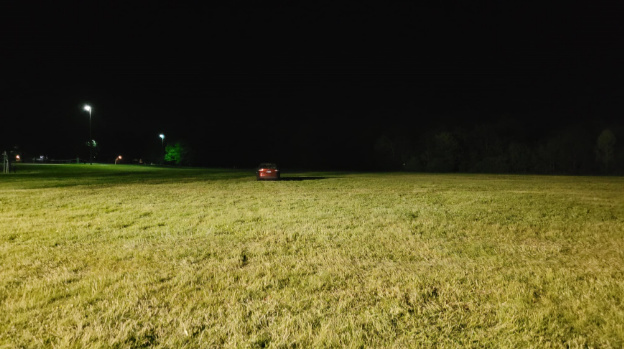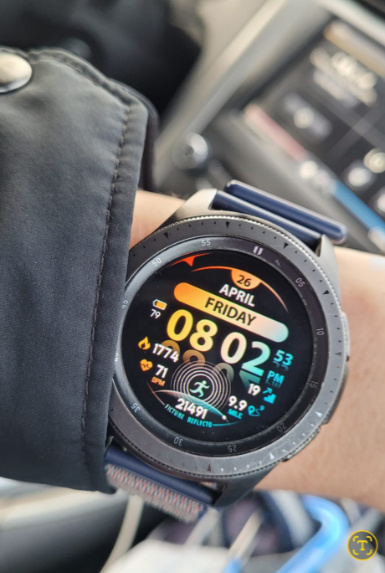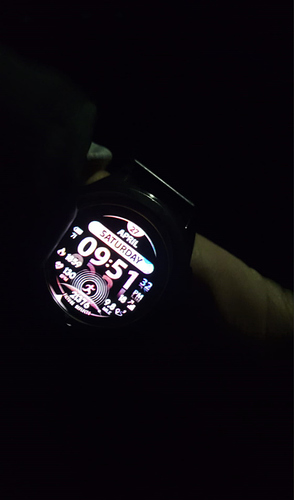A major 5* Event is not like any other show. Taking you dogs to an ordinary sort of horse activity is perfectly do-able because there is more space, fewer humans, fewer other dogs, quiet places on the course. I love dogs. I frequently take dogs to Events. I never would consider taking a dog to Badminton or to Burghley because ONCE I did.
I’m going to note (and this isn’t really directed at you but I’ve seen a few posters note to have waterproof shoes if possible.
Aside from maybe one year where temperatures were cool enough I could wear my Ariat country boots (never had Dubarry $$$$), ,I just wore sneakers or maybe my Doc Martens (the Docs were worn enough to be well broken-in). In fact I think the year it poured down rain and I got photos at the Head of the Lake might’ve been the year I wore my Docs. (think I only did it once and never again unless there wasn’t rain in the forecast b/c they got so muddy that day). Can’t say I really remember my socks getting all wet but I was usually getting there later in the morning just as XC started.
It’s totally fine  I have too many animals between 4 dogs and 5 cats. All were dumped animals save for one dog and my deceased parent’s cat. They ALL have to get along and be decent citizens, even the kitties
I have too many animals between 4 dogs and 5 cats. All were dumped animals save for one dog and my deceased parent’s cat. They ALL have to get along and be decent citizens, even the kitties
The happy-go-lucky little goofball dog I had as a kid sat on command exactly once in his life but it was during the one moment it mattered:
County fair, 4-H dog show, I’m like 10 years old, he’s maybe a year old (think we got him in '02 as a pup and I was showing him summer of '03). I’d been working on getting him to sit on command but he wouldn’t do it consistently. That day, he SAT like the best good boy dog ever the first time I told him and I don’t think I even had to push down a bit on his back to coax him to sit.
Now, he did goof it up a little bit because he sat facing me, with his back to the judge and IIRC for the show they wanted the dog to sit facing the judge but I remember being SO proud he sat.
We got the trophy for Most Enthusiasm for the show that year which in hindsight was probably basically the participation trophy  but it was so fitting because if there’s one thing that dog had in spades it was enthusiasm for literally everything.
but it was so fitting because if there’s one thing that dog had in spades it was enthusiasm for literally everything.
I’ve never been, oh how I would love to go, but that won’t happen.
While watching the cross country online, I notice the little dogs yapping hysterically every time a horse passes by (and sometimes when no horse is in sight) and it is very annoying. I think the barking must be even louder for the spectators at the event.
I always wonder why people would bring an excitable yapper to an event. Is there anyone (other than a hunter) who likes to listen to a dog barking and barking and barking? There always seems to be one or more at every event I’ve watched.
It’s nice to see the calm dogs behaving themselves and enjoying a day out with their people, but the barkers intrude on everyone’s good time. I think it’s a little unfair too for the competitors, who have enough on their plate, though no doubt the riders are used to it by now.
I do agree with those who say to go without the dog the first time. See if the atmosphere, the lay of the land, and the restrictions on where dogs are allowed is something that the OP and their dog can navigate comfortably.
Totally agree.
One year when I was working in the vet box, a connection brought in an ill-mannered dog on a retractable leash. When I very kindly told the person, “No dogs in the vet box, FEI rule,” and politely offered to hold the dog outside the box so they could go to their horse/people, the person became argumentative.
It took someone with more clout than me to kick the person and dog out… but not before the dog almost close-lined several horses and people with its leash. 
If you are a credentialed guest with access to horse/rider areas, you should have some clue what a big deal the competition is to everyone involved and not let your dog cause injury and chaos to horses and riders. Or so you would think. 
But, I think the majority of people who attend the event with their dogs are capable. It’s a shame there are always a few rotten apples, though.
I prefer sneakers to boots at KY, unless it is actually raining. I’d rather change my socks or a different pair of sneakers at lunch than walk around in heavy boots all day. I may be in the minority. Also IME wearing a few different shoes over the course of the weekend keeps my feet from hurting too badly.
As far as dogs, usually the dogs I see are pretty well-behaved. There’s a million dogs there. A few are rude/yapping but I think it’s more that the owners underestimated how stimulating the environment there is and not that they intentionally brought their naughty dog. I have gotten “tripped” by a leash before by owners that weren’t paying attention. Personally I wouldn’t bring my dogs. It’s just one more thing to worry about and they would probably be overstimulated.
My suggestion. Walk the whole course, backwards. At the end you can observe the skill and horsemanship needed to bring home a tired horse and also the elation of riders who complete, which is a massive achievement. Then walk round the later fences where often the crowds have been thined out by distance. In the days of multimedia broadcasting, fences tend to be clumped so one camera can be used on multiple fences. This means it is often possible to watch horses over two or three fences from a single spot. The risk with this approach is that if there are multiple elimination and retirements you might not see too many runners but at least you can look at the fences before moving on. Listen to the PA system to hear how far combinations have got.
There is usually a rythmn to course design. It starts with straightforward fences to get the horse going, then becomes more technical and more intense, then towards the end the fences tend to be less technical to help tired horses and tired riders get home safely. That doesn’t mean the 5* fences aren’t invariably huge and awe inspiring but the later ones are generally more straightforward again.
Hack on round to each fence and, if crowded, wait for a horse to go past before easing forward as the crowd thins out when people move on. Personally, I dislike watching on the big screens: the experience is one dimensional. Walking around the whole course gives one an understanding of the terrain, the ups and the downs, the light and shade, the twists and turns. In Eventing the terrain is as influential as the fences - it is called “cross country” after all - and it is one of the unique aspects of the sport.
The fences are actually not as massive as they first appear. They are flagged where they are to be jumped, so, for example, an entire log with roots and branches still in place looks wild and scary but will be flagged such that only a certain section of the trunk will jumped. Height is measured from the expected point of take off so if the tree trunk curves upwards it looks huge to the human eye but the jumping spot is usually flagged at a point that meets the FEI height and width requirement. One skill of the xc rider is to see where the ground will help the horse to get between those flags with least effort: not every approach is flat. All the other decor around the fences, the so-called “unjumpables”, help guide and channel the horses towards the actual jump. Sometimes these as used as a clever way to keep horses safe dispite the rider. Look at the hoof prints left on the grass and you can see the line that riders are using.
A few numbered fences will involve combinations where striding is important but adjustability to fit the circumstance is the key rather than previously counted stride numbers. A tired horse will need a different approach to a fresh one. Water, in particular, is almost impossible to measure in strides because the water adds in so many variables.
If you have the opportunity of more than one day, walking the course without horses running gives one a sense of the complete course and the thinking of the Course Designer.
I hope, OP, that you have a splendid time.
I would disagree with that. I walked Kentucky with a non horse friend one time. We were at one of the early table jumps. Basically a fly fence. He asked me if I could jump that. I told him not if you gave me the best horse in world and guaranteed me he would jump it.
I’ve schooled my hunt horses at Prelim to give you a point of reference.
I second this. When I was there the dew was really heavy when we walked the course, and there was intermittent light rain on XC day. Sneakers or low muckers with changes of socks worked best for me.
I will also say that even for fit horse people, it’s a LOT of walking, particularly if you don’t get preferred parking.
Someone else mentioned up thread that preferred parked is well worth it, I would like to second that as well. If you don’t get preferred parking and go with a friend(s), take turns dropping people off at the gate and then parking the car and walking back.
Everyone in our group fell asleep immediately after dinner after XC day. 
Fixed fences 1.20, brush fences 1.45 so no, compared to the heights 5* Showjumpers are leaping, not that high. They look bigger through design and location. It isn’t so much the dimensions of a single fence but the speed required over the ground and the sheer, relentless number of fences, one after another. And no, I most certainly can’t jump 5* - there are very few people in the world up to the job!
This - many posters have suggested doing a course walk the day before (and you absolutely should if you have the time), which will be outside the ropes to preserve the footing for the competitors. What few people have mentioned is that it is quite fun to walk the course once the cross-country phase has finished. You can walk inside the ropes at that point, and you learn all kinds of things - the hoofprints will tell you the different lines people took, where they actually took off and landed for those massive fences, whether the footing was soft or hard or holding, what kind of studs people were using, etc. You can walk right up to the fences and get an even better sense of their scale. I highly recommend it!
I haven’t seen anyone mention the horse inspections, either. They happen on Wednesday afternoon (before the start of competition) and Sunday morning (between cross country and show jumping) and you can learn an awful lot watching those as well. Wednesday and Sunday are very different. Seeing the horses without tack is fascinating, and a great lesson in the huge variety of horses and types that make successful eventers. No two are the same!
I get that but the XC fences are a little more stout even with the frangibles. Plus terrain makes a huge difference. Let’s not forget that banks jump much higher than measured and water adds quite a bit.
“This - many posters have suggested doing a course walk the day before (and you absolutely should if you have the time), which will be outside the ropes to preserve the footing for the competitors.”
I was at Badminton in 2014. The weather was really tough and it was a new course designer. XC took out over 40 riders. So there were big gaps in the running order. I was there with my brother (non horse person) and he didn’t understand the misses. So during some of the big course holds and gaps, the jump judges let us come out on the course and I could show my brother why the problems were happening. It was quite cool to do.
I’ll be honest, most of the dogs do not look happy there. Many seem stressed out. I vote to NOT bring the dog. That being said, I’ll also admit to petting more than my fair share of dogs that are there. 
I don’t ever pay for preferred parking. I just feel that I’m going to be walking over 20,000 steps, what’s a few more? We tend to “close down” the event. 
Steps on Friday:
Steps on Saturday:
Where did we park? 

DuBarry’s were my big splurge one year (I think maybe 2005ish?) and they are worth every penny, I still wear them although they are kind of beat up now. That breathable GoreTex lining makes all the difference in damp/humid conditions, feet stay dry and cool. Even if conditions are dry, you will get wet if you walk the cross country first thing in the morning without some type of waterproof footwear.
$359 now.
I don’t remember what I paid in 2005, but at the time I thought it was a lot. I don’t think $359 is that terrible considering how much use I got out of mine. And I wore them to work to, they were very stylish and I got lots of compliments on them, nobody else had anything similar so they were a big hit. But I wore them around the barn, spectating at clinics and walking the cross country at KY and Fairhill. They are perfect for standing in water jumps too.
Where are folks finding them for $359? I can only find them for just under $500 (USD) 
They have many different styles in addition to the ones you will usually see at KY and other big events, maybe that accounts for the difference in price?


